This week, Rolande and I made a short road trip to southern New Mexico. Our primary destination was the White Sands National Monument, near the City of Alamagordo. A National Monument in the United States is a protected area that is similar to a National Park, but can be created from any land owned or controlled by the federal government by proclamation of the President of the United States. A National Park is created by an act of Congress.
Located in the heart of the Tularosa Basin, it’s one of the world’s great natural wonders. Wave-like dunes of white gypsum sand have engulfed 275 square miles of desert, creating the world’s largest gypsum dunefield. White Sands National Monument preserves a major portion of this unique dunefield, along with the plants and animals that live here.
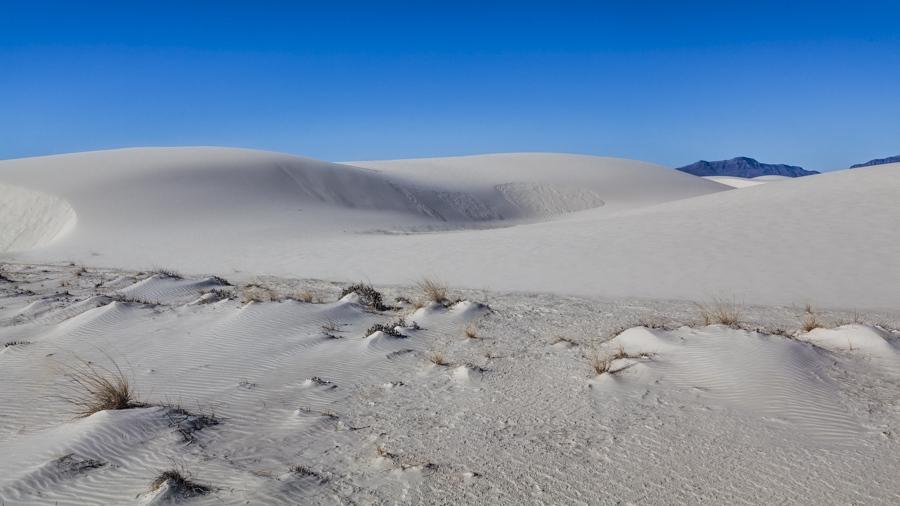
Gypsum is rarely found in the form of sand because it is water-soluble. Normally, rain would dissolve the gypsum and carry it to the sea. The Tularosa Basin is enclosed, meaning that it has no outlet to the sea and the rain that dissolves gypsum from the surrounding San Andres and Sacramento Mountains is trapped within the basin. Thus, water either sinks into the ground or forms shallow pools which subsequently dry out and leave gypsum in a crystalline form, called selenite, on the surface.
I enjoyed photographing the varied areas that I visited, including this classic, rippled mound that I chose to reproduce in black and white.
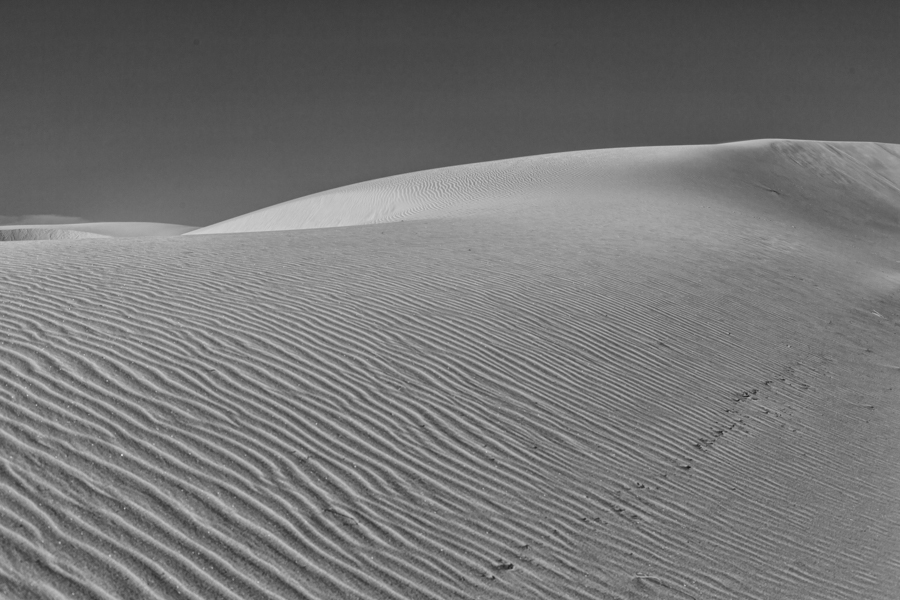
White Sands National Monument is home to many species of plants and animals that have adapted to the desert’s harsh conditions. Temperatures can vary over 100 deg F (37 deg C) between the hot desert summers and cold winters experienced at an elevation of 4,235 feet (1,291 m). Average precipitation is 9 inches (229 mm) per year and inhabitants must live with the constantly shifting sand. (I don’t know where this fence ends and how well it is surviving!)
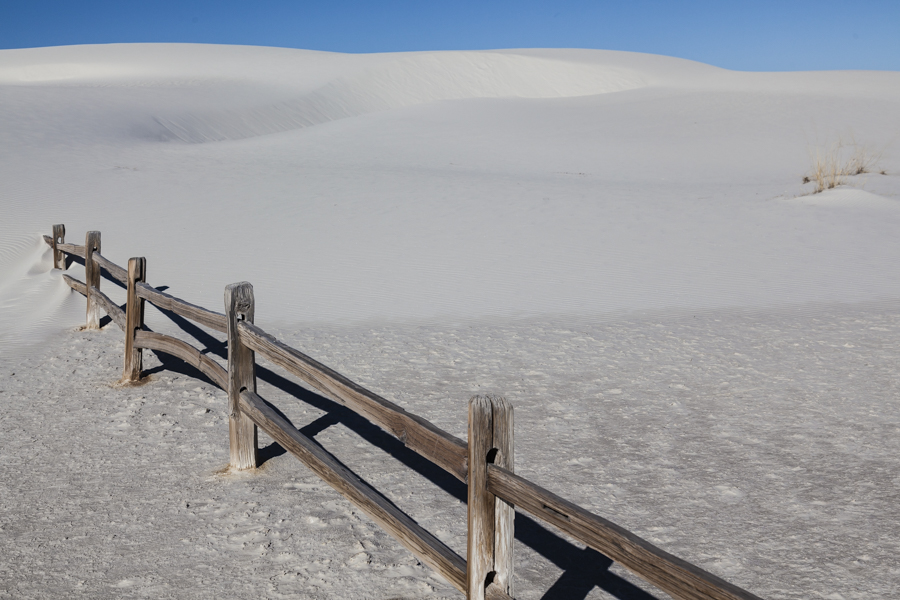
One of the hardy plants that survive among the dunes are the various forms of yuccas including this Soaptree Yucca. I think it makes a good photography subject.
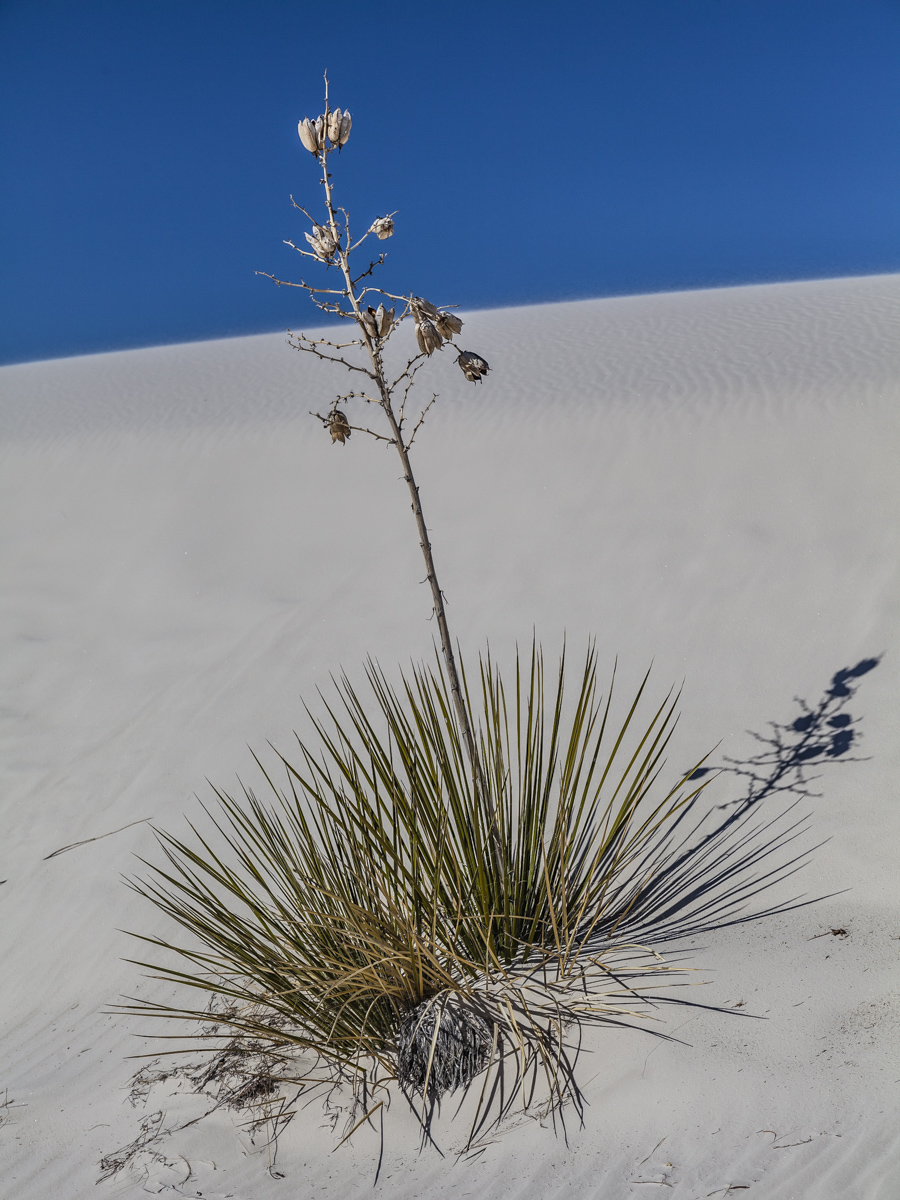
I conclude with two of my favourite pictures from our visit to White Sands NM. This first photo captures a wind-rippled dune and a beautiful cloud pattern, soon after sunrise.
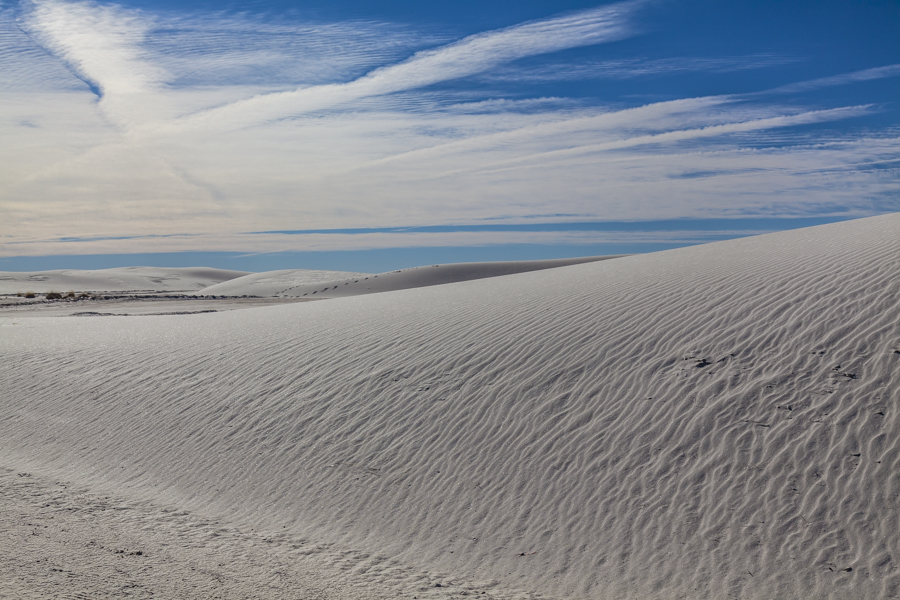
Lastly, I like this simple scene featuring another yucca plant, poking through the ever-shifting sand.
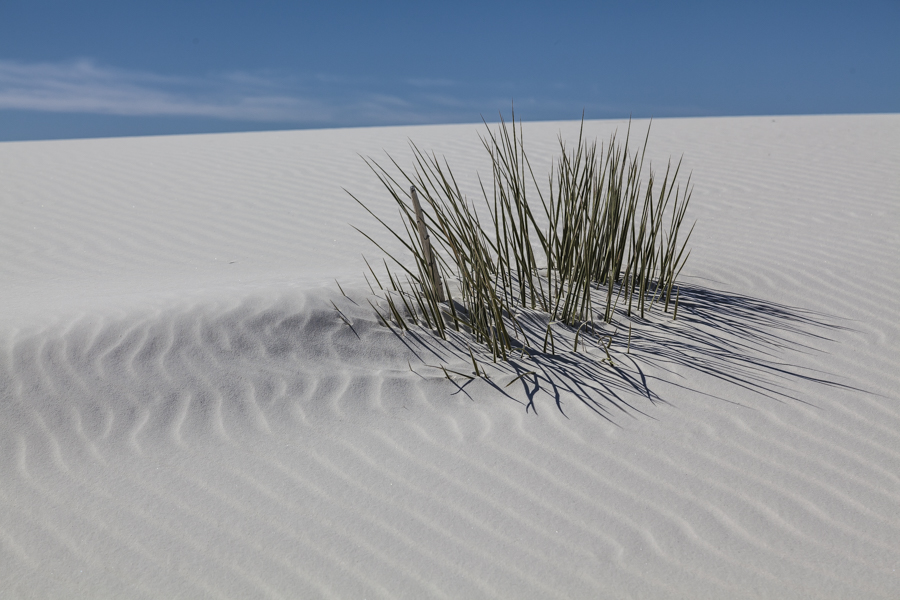
The photography was not particularly challenging but I was glad I dressed warmly. It was quite cool when we first arrived, about 40 deg F (4 deg C). As the sun rose in the sky it got warmer but, at the same time incredibly bright. (The white sand is a giant reflector.) The good news is that I was able to use an aperture of f/8 at a relatively low ISO (160) and achieve shutter speeds of 1/800 sec. Good image quality, no noise and I was able to take most of my shots hand held without concern for camera shake. Auto-focus doesn’t work very well in a sea of white so I needed to be very careful to get food focus. In most cases, I was able to focus on a distinct element of the scene, a fence or a plant using focus lock and recomposing to shoot the image. Alternatively, I used manual focus.

WOW! Amazing landscape!
Wonderful pics!
Interesting images, Peter. Interesting commentary, also. Thanks for sharing.